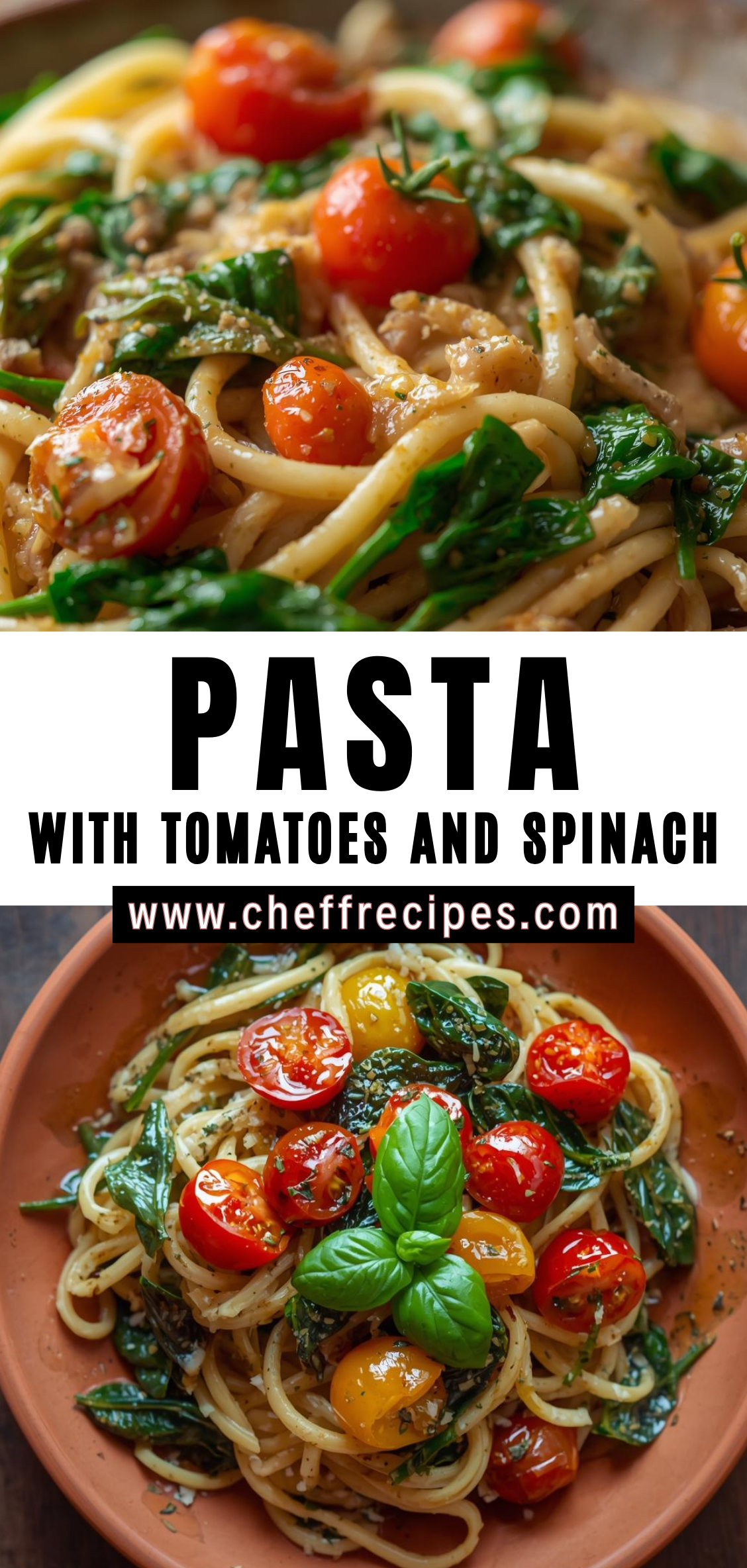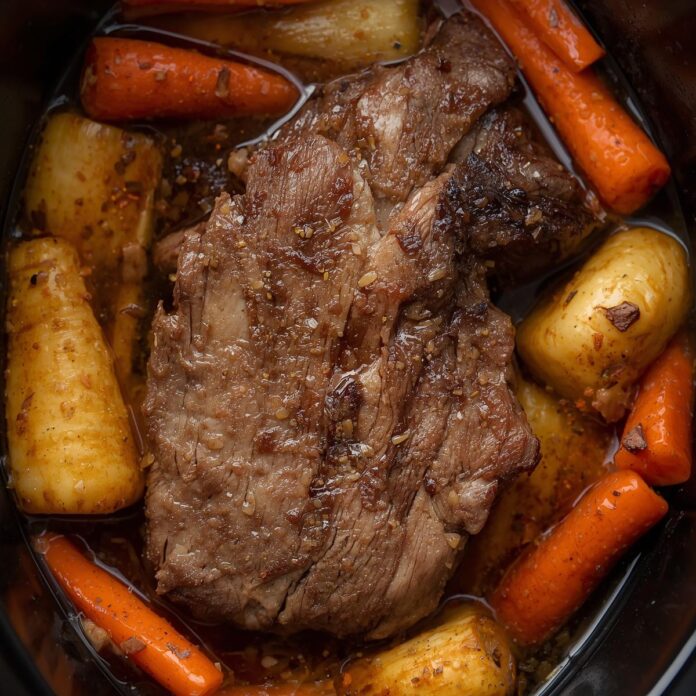Few dishes are as universally comforting and versatile as pasta. Its simple, yet satisfying nature has made it a cornerstone of countless culinary traditions, and it is celebrated not just for its taste, but for its adaptability. Among the vast array of pasta dishes, one of the most vibrant and healthful options combines the freshness of ripe tomatoes with the earthy richness of spinach. This combination is more than a simple pairing; it is a harmonious balance of flavors, textures, and colors that can elevate a weeknight dinner into a nourishing and memorable meal.

Tomatoes, with their bright acidity and natural sweetness, serve as the perfect counterpoint to the subtle, slightly bitter notes of fresh spinach. When gently cooked together with aromatic garlic and olive oil, they create a sauce that is light yet deeply flavorful, capable of coating pasta in a way that is both comforting and sophisticated. Unlike heavy cream-based sauces, a tomato and spinach sauce allows the individual ingredients to shine, celebrating freshness and simplicity while still delivering satisfying richness.
The appeal of this dish lies not only in its flavor but also in its speed and accessibility. Pasta with tomatoes and spinach is an ideal choice for cooks of all skill levels, requiring minimal ingredients and straightforward techniques. A few basic steps—sautéing garlic, simmering tomatoes, adding spinach, and combining with pasta—are all that is needed to produce a dish that tastes as though it took hours to prepare. Despite its simplicity, the results are far from ordinary. The sweet-tart tomatoes, tender spinach, fragrant garlic, and al dente pasta create a medley of tastes and textures that is both comforting and exciting.
This recipe is also a celebration of nutrition. Tomatoes are rich in lycopene, a powerful antioxidant, as well as vitamin C and potassium. Spinach contributes iron, calcium, and vitamins A and K, making this pasta dish a nutrient-dense option that supports both heart health and overall wellness. Combined with whole-grain or enriched pasta, this dish provides a balanced meal that is satisfying without being heavy. It is a perfect example of how simple, wholesome ingredients can create a meal that is both delicious and nourishing.
Culinary techniques play a subtle but important role in bringing this dish to life. The art of sautéing garlic without burning it, the timing of adding spinach so that it wilts just enough without losing color or texture, and the process of seasoning the sauce for depth and balance all require attention to detail. Learning these techniques not only ensures a successful dish but also builds a foundation of skills that can be applied to countless other recipes.
Beyond flavor and nutrition, pasta with tomatoes and spinach embodies convenience and adaptability. It can be transformed into a light lunch, a hearty dinner, or even a base for more elaborate creations. Additional ingredients—such as olives, capers, roasted vegetables, or cheeses—can be incorporated to suit taste preferences or to make use of what is available in the pantry. The dish can be served warm or at room temperature, making it ideal for meal prep, picnics, or casual gatherings.
Perhaps most importantly, this recipe captures the essence of mindful cooking. In an age where convenience often outweighs quality, preparing pasta with tomatoes and spinach encourages engagement with fresh, seasonal ingredients. Each step—from selecting firm, ripe tomatoes to washing and gently tearing fresh spinach—reminds us that cooking is not just about sustenance, but also about creativity, care, and connection. The process of transforming simple vegetables into a fragrant, flavorful pasta dish is rewarding in itself and offers an opportunity to slow down and appreciate the beauty of cooking.
In the sections that follow, you will find detailed guidance on ingredient selection, preparation techniques, cooking steps, seasoning tips, and serving suggestions. Each section is designed not only to help you create a successful dish but also to deepen your understanding of the ingredients and methods that make pasta with tomatoes and spinach a timeless favorite. By the end of this guide, you will not only have mastered a versatile and wholesome pasta recipe, but you will also have gained insights that can enhance your broader culinary skills.
Ingredients Preparation and Selection
Before beginning, it is important to select high-quality ingredients and prepare them thoughtfully. Each component plays a key role in flavor, texture, and visual appeal.
Selecting the Pasta
Pasta is the backbone of this dish, and choosing the right type can make a noticeable difference:
-
Type: Long noodles such as spaghetti, linguine, or fettuccine allow the sauce to cling to each strand. Short pasta like penne or fusilli works well too, as the sauce collects in the hollow or twisted shapes.
-
Quality: Opt for durum wheat pasta for a firm, al dente bite. Fresh pasta can be used, but reduce cooking time accordingly.
-
Portioning: Plan about 2 ounces (dry) per person, or roughly ½ cup dry pasta per serving.
Selecting Tomatoes
The choice of tomatoes determines the flavor base of the sauce:
-
Fresh tomatoes: Ripe, firm, and aromatic tomatoes provide the best natural sweetness and acidity. Varieties like Roma or plum tomatoes work well.
-
Canned tomatoes: For convenience or when fresh tomatoes are out of season, use high-quality canned whole or diced tomatoes. Look for “no salt added” versions for better control of seasoning.
-
Preparation: Fresh tomatoes should be blanched, peeled, and chopped. Canned tomatoes can be lightly crushed by hand or with a spoon for a rustic texture.
Selecting Spinach
Spinach contributes vibrant color, nutrition, and a delicate texture:
-
Type: Baby spinach is tender and cooks quickly. Mature spinach leaves have more flavor but may need longer cooking and stem removal.
-
Preparation: Wash thoroughly to remove dirt or grit. Trim thick stems and roughly chop large leaves. Pat dry to avoid excess water in the sauce.
Aromatics and Flavor Enhancers
Aromatics form the foundation of the sauce’s flavor:
-
Garlic: Fresh cloves, finely chopped or sliced, provide the characteristic aroma. Avoid pre-minced garlic in jars, as it can taste overly pungent.
-
Onion (optional): A small yellow or red onion can be sautéed for sweetness and depth.
-
Olive oil: Extra virgin olive oil provides richness and helps carry the flavors of garlic and tomatoes.
-
Herbs: Fresh basil or oregano adds brightness; dried versions can be used but should be added earlier to allow infusion.
-
Seasonings: Salt, black pepper, and a pinch of red pepper flakes can balance the flavors and provide subtle warmth.
Preparing the Pasta
-
Boil water: Use a large pot of generously salted water—about 1 tablespoon salt per 4 cups of water. The water should taste like the sea; this is your primary seasoning for the pasta.
-
Cook pasta: Bring water to a rolling boil, then add the pasta. Stir occasionally to prevent sticking. Follow the package instructions for al dente texture, typically 8–12 minutes depending on the type.
-
Reserve pasta water: Before draining, scoop out ½ cup of starchy pasta water. This can be used to adjust the consistency of the sauce later.
-
Drain pasta: Drain the rest of the water and set aside. Do not rinse; rinsing removes the starch that helps the sauce cling.
Preparing the Tomato and Spinach Sauce
-
Heat olive oil: In a large skillet or sauté pan, heat 2–3 tablespoons of extra virgin olive oil over medium heat.
-
Sauté garlic and onions: Add chopped garlic (and onions, if using) and sauté until fragrant, about 1–2 minutes. Avoid browning garlic, which can create bitterness.
-
Add tomatoes: Stir in chopped fresh or crushed canned tomatoes. Simmer gently over medium-low heat for 10–15 minutes, allowing the natural sugars to concentrate and the flavors to meld.
-
Season the sauce: Add salt, pepper, and optional red pepper flakes. Taste and adjust seasoning as needed.
-
Add spinach: Toss in the spinach gradually, letting it wilt slightly before adding more. Stir continuously to ensure even cooking and prevent clumping.
-
Simmer gently: Allow the sauce to cook for an additional 2–3 minutes after adding the spinach. The spinach should retain a bright green color and tender texture.
-
Optional flavor boosters: For extra depth, add a splash of balsamic vinegar, a sprinkle of Parmesan, or a few fresh basil leaves at this stage.
Combining Pasta and Sauce
-
Add pasta to the sauce: Transfer the drained pasta directly into the skillet with the tomato and spinach sauce.
-
Toss to coat: Gently toss or stir to ensure every strand or piece of pasta is coated evenly with the sauce.
-
Adjust consistency: If the sauce is too thick, add a few tablespoons of reserved pasta water gradually until the desired texture is achieved.
-
Final seasoning: Taste again and adjust salt, pepper, or herbs.
Optional Garnishes and Serving Suggestions
-
Grated cheese: Freshly grated Parmesan, Pecorino Romano, or a similar hard cheese adds umami richness.
-
Herbs: Sprinkle fresh basil, parsley, or oregano just before serving for added aroma and color.
-
Olive oil drizzle: A light drizzle of high-quality extra virgin olive oil enhances mouthfeel and flavor.
-
Protein additions: Grilled chicken, shrimp, or tofu can be added for a more substantial meal.
Pasta with Tomatoes and Spinach
Few dishes are as universally comforting and versatile as pasta. Its simple, yet satisfying nature has made it a cornerstone of countless culinary traditions, and it is celebrated not just for its taste, but for its adaptability. Among the vast array of pasta dishes, one of the most vibrant and healthful options combines the freshness of ripe tomatoes with the earthy richness of spinach. This combination is more than a simple pairing; it is a harmonious balance of flavors, textures, and colors that can elevate a weeknight dinner into a nourishing and memorable meal.
Ingredients
- Pasta (spaghetti, penne, or your choice): 12 oz (about 340 g)
- Olive oil: 2 tbsp
- Garlic: 3 cloves, minced
- Cherry tomatoes: 2 cups, halved (or 3–4 medium tomatoes, chopped)
- Fresh spinach: 4 cups, washed and trimmed
- Salt and pepper: to taste
- Red pepper flakes: 1/4 tsp (optional)
- Parmesan cheese: 1/4 cup, grated (optional)
- Fresh basil: 2 tbsp, chopped (optional)
Instructions
- Cook pasta: Bring a large pot of salted water to a boil. Cook pasta according to package instructions until al dente. Reserve 1/2 cup of pasta water, then drain pasta.
- Sauté garlic: In a large skillet, heat olive oil over medium heat. Add garlic and cook for 30–60 seconds until fragrant.
- Cook tomatoes: Add cherry tomatoes to the skillet. Cook 5–7 minutes until they soften and start releasing juices.
- Add spinach: Stir in the spinach and cook 2–3 minutes until wilted. Season with salt, pepper, and red pepper flakes if using.
- Combine pasta and sauce: Add the drained pasta to the skillet. Toss to combine, adding reserved pasta water a little at a time to create a light sauce.
- Finish: Remove from heat. Sprinkle with grated Parmesan and fresh basil if desired. Serve warm.
Notes
- Protein option: Add cooked chicken, shrimp, or beans for extra protein.
- Tomato variety: Grape or cherry tomatoes work best for a slightly sweet flavor; canned diced tomatoes can also be used.
- Make it creamy: Stir in 1/4 cup of heavy cream or ricotta for a creamier version.



